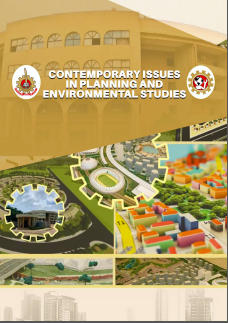Locational Characteristics and Accessibility of Primary Schools in Osogbo Metropolis, Nigeria
DOI:
https://doi.org/10.5281/zenodo.17053926Keywords:
School Locational Characteristics, Urban Planning, Educational Infrastructure, Osogbo Metropolis, GIS, Road NetworksAbstract
Access to quality primary education is crucial for sustainable development, yet disparities in school distribution and accessibility persist in Osogbo Metropolis, Nigeria. This study examines the locational characteristics of primary schools in Osogbo Metropolis, Nigeria, focusing on accessibility, land use compliance, and environmental influences. The research evaluates how school planning, space allocation, and pupils and staff distance travel align with planning standards and how surrounding land uses affect learning environments across the 356 primary schools (51 public and 305 private) using stakeholder interviews, Global Positioning System (GPS) to pick primary schools location coordinates, Geographic Information Systems (GIS) and inferential statistics for analysis. Findings reveal that only 3.4% of schools meet the recommended minimum land area of 4 acres, with public schools (15.7%) faring better than private schools (1.3%). Poor road infrastructure affects accessibility, as only 21.6% of schools are accessible via tarred roads without potholes. Distance to transportation is another challenge, with 34.6% of schools located more than 2,000 meters (2km) from the nearest bus stop, exceeding the recommended 1–2 km walking distance. Furthermore, 56.5% of schools are in predominantly residential areas, while 43.5% are in mixed-use zones, exposing students to environmental hazards like noise and air pollution. The study highlights the need for strategic school siting, improved road networks, and stricter land use enforcement. Integrating GIS-based planning with education policies can enhance equitable access and create safer learning environments, especially for pupils who are just developing their immune systems.
Downloads
Published
Versions
- 2025-09-04 (2)
- 2025-07-22 (1)
How to Cite
Issue
Section
License
Copyright (c) 2025 Department of Urban and Regional Planning, LAUTECH

This work is licensed under a Creative Commons Attribution 4.0 International License.





